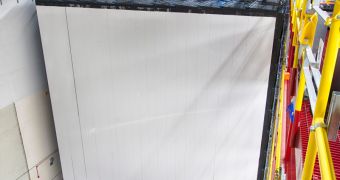Scientists operating the NuMI Off-Axis νe Appearance (NOvA) experiment at the US Department of Energy's (DOE) Fermi National Accelerator Laboratory (Fermilab) in Batavia, Illinois, announce the detection of their first long-distance neutrinos, a tremendous success for the detector.
NOvA, which is not yet completed, is a successor of the Main Injector Neutrino Oscillation Search (MINOS) particle physics experiment at Fermilab. The acronym NuMI in its name comes from the Neutrinos at Main Injector beamline at Fermilab, which produces the neutrinos.
When completed, NOvA will feature a near detector – the one at Fermilab – and a far detector, located at the Soudan mine in northern Minnesota, about 810 kilometers (500 miles) away. The two installations will study how muon neutrinos change to electron neutrinos as they move between them.
Neutrinos are very small, nearly mass-less elementary particles with a zero electrical charge. Though they are extremely abundant in nature – several billions pass through our bodies ever single second – they rarely interact with regular matter, which makes them extremely difficult to detect.
“NOvA represents a new generation of neutrino experiments. We are proud to reach this important milestone on our way to learning more about these fundamental particles,” says Nigel Lockyer, the director of Fermilab.
When the entire experiment is set up, the NuMI beamline will release billions of neutrinos in the direction of the two detectors every two seconds, multiple times per day. This will allow NOvA to detect at least a handful of these elusive particles daily.
The recent detections were carried out with the Minnesota-based detectors, which is still largely under construction. Only parts of its electronics system is wired in, and the tank holding the detection fluid is only partially filled. Even so, the instrument was able to make its first detection.
“That the first neutrinos have been detected even before the NOvA far detector installation is complete is a real tribute to everyone involved. That includes the staff at Fermilab, Ash River Lab and the University of Minnesota module facility, the NOvA scientists, and all of the professionals and students building this detector,” says Marvin Marshak.
“This early result suggests that the NOvA collaboration will make important contributions to our knowledge of these particles in the not so distant future,” adds the scientist, a physicist at the University of Minnesota, and the director of the Ash River Laboratory that manages the Soudan installation.

 14 DAY TRIAL //
14 DAY TRIAL //